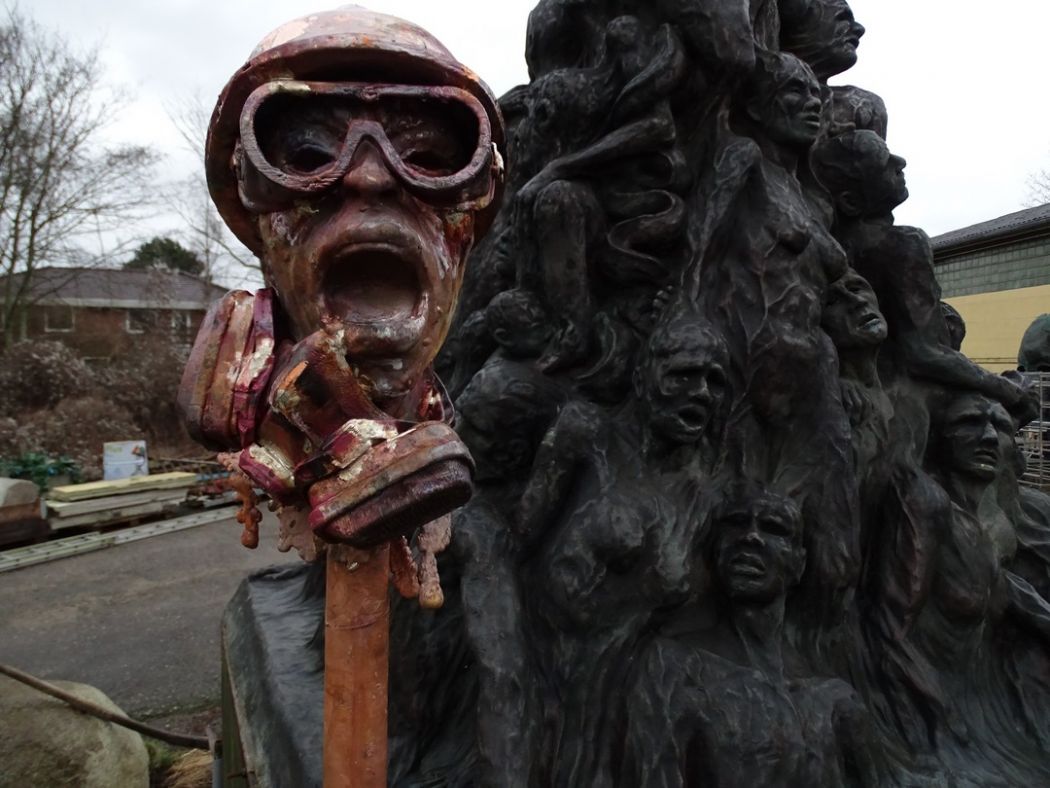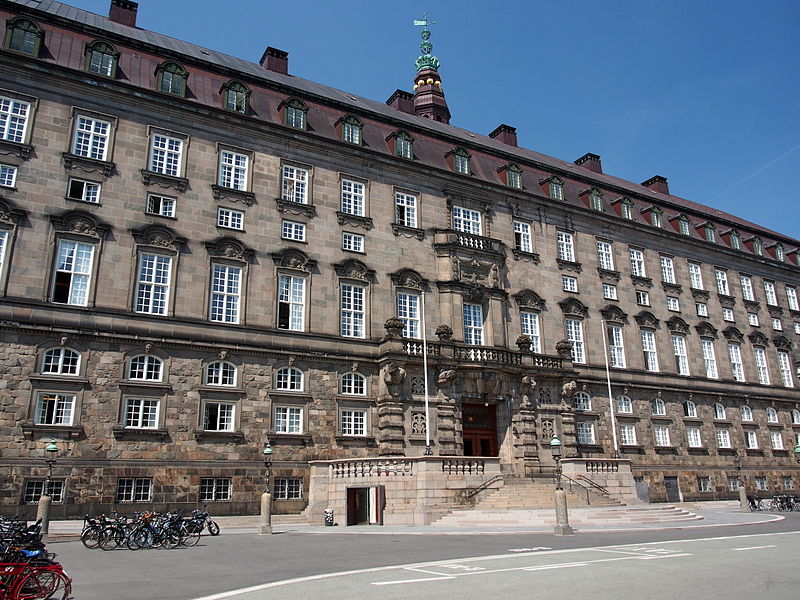Danish authorities have defended the erection of a statue outside the parliament in Copenhagen depicting Hong Kong protesters, despite complaints from Chinese officials.
A modified version of Danish artist Jens Galschiøt’s Pillar of Shame – portraying a stack of contorted bodies to commemorate victims of the 1989 Tiananmen Massacre – was placed outside the parliament in Copenhagen on January 23. The eight-metre tall sculpture included the faces of Hong Kong pro-democracy demonstrators wearing trademark helmets, goggles and gas masks.

The sculpture was made in collaboration with The Alternativet – a Danish green political party – and NGO Amnesty International Denmark. A group of politicians from parties – including Inuit Ataqatigiit, Socialistisk Folkeparti, Enhedslisten and Fremad – also supported the project.
‘Site of conflict’
Officials from the Chinese Embassy in Denmark had attempted to pressure authorities into removing the statue, warning that it would damage relations between the two countries, according to newspaper Jyllands-Posten – citing a note from the City of Copenhagen which authorised the artwork.
The note said embassy representatives phoned municipal authorities a day before the sculpture was erected saying that it mispresented the political situation in Hong Kong. They said it would offend Chinese tourists and pose a security risk as a “potential site of conflict,” adding that it would be wise to withdraw the sculpture’s permit.
Copenhagen authorities said the artwork complied with health and safety regulations and suggested involving the Danish foreign ministry in the future.

A spokesperson for the Chinese embassy said in a statement the next day that the artwork sought to damage China’s reputation and hinder its development.
“The right to freedom of expression does not mean one can willfully slander and discredit another country,” they said. “The pace of the Chinese nation’s great rejuvenation is unstoppable. The conspiracy of a few people and anti-China organisation in Denmark is doomed to fail.”
An open hearing was held at the Danish parliament earlier this month over allegations that Beijing had sought to censor Danish artists and art institutions, including film festivals and the Royal Theatre.
‘Absurd request’
Galschiøt told HKFP that China was within its right to express its disapproval but that it was unprecedented for a foreign government to call for the removal of political artwork.
“I am not surprised that the Chinese Embassy is making a statement. But I marvel at the rhetoric which is very violent and unusually undiplomatic from a [embassy] to a European country,” he said. “It is unreasonable and unheard of for a foreign power [to] decide what [art] to exhibit in the Danish public places.”

Uffe Elbæk, former leader of The Alternativet and one of the supporters behind the pillar, also told HKFP that the sculpture was an expression of support for Hong Kong’s protest movement and will not be removed.
“It is an absurd request. We honour and value our freedom of speech and freedom of expression and the Chinese Embassy should do the same,” he said. “I hope China can understand and will respect that we will not and we cannot compromise fundamental rights.”
Carla Sands, the US Ambassador to Denmark, expressed her support for the preservation of the pillar last Thursday in a tweet, saying: “The US and [Denmark] value freedom of speech and peaceful assembly.”
“The US stands with the people of Hong Kong and supports their human rights,” she added.
The US and DK value freedom of speech and peaceful assembly.
The US stands with the people of Hong Kong and supports their human rights.#FreedomOfSpeech #HumanRights #StandWithHongKong pic.twitter.com/neKj2pdTna
— Ambassador Carla Sands (@USAmbDenmark) February 5, 2020
Hong Kong has seen months of unrest triggered by a now-withdrawn proposal to draw up an extradition agreement with China. The movement has evolved into calls for police accountability, democratic reform, among other demands.
The statue is set to remain in place until April.
Galschiøt was denied entry into Hong Kong in 2008 and 2009 but was allowed to enter the city in 2013.
